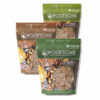Efforts to ramp up testing amid the coronavirus pandemic have shone a rare spotlight on an unsung hero of the supply chain: the packaging manufacturer. For several months now, I have seen an immense commitment from packaging line operators to produce flexible packaging materials to help address the nationwide demand for coronavirus test kits and other medical supplies.
Individuals and companies along the supply chain have stepped up to the challenge, giving medical suppliers pause to reflect on lessons learned to move the industry forward. One positive outcome has been a resurgence in the recognition and appreciation of flexible packaging advantages in the medical industry. But what makes materials like DuPont Tyvek medical packaging, medical-grade papers, polyethylene, polypropylene, and other materials such a good fit for packaging and distributing medical supplies? Read on to explore three benefits of flexible packaging in the medical space.
1. Suitable for sterilization
Medical supply products must be delivered sterile to even be considered for use, meaning that packaging design is just as critical as product design. Flexible packaging has evolved over time to hold up well under two of the most prominent sterilization agents for medical supplies: ethylene oxide (ETO) and gamma radiation. Because of flexible packaging’s unique breathability, it lines up well with the process of flushing ETO into the packaging and pulling it back out. With gamma sterilization, you don’t need breathability, but you need materials that can pass through the process without becoming brittle or yellowed. Flexible packaging checks both of those boxes.
Compatibility with sterilization methods is also important for the specific products you are packaging. For instance, a pacemaker could not undergo gamma sterilization as it would destroy the inner workings of the device, whereas ETO is less rigorous and more suitable for the product.
2. Withstands rigorous shipping
From 46-inch-long catheters to syringe barrels, medical supply packaging needs to accommodate a wide array of shapes and sizes. Versatile flexible packaging can be tailored to fit these distinct requirements based on product design much more so than other packaging types. After the products are packaged individually—often a requirement in the medical space for labeling and tracking purposes—they can be combined with secondary packaging, such as cases, to stabilize and withstand shipping.
Packaging for medical supplies must also account for device protection, abrasion, puncture resistance, and seal strength so the product stays intact from manufacturing to shipping to distribution.
3. Balances protection and practicality
Flexible packaging helps manufacturers strike a critical balance between durability and ease of use. Syringes, swabs, and other items need to remain sterile until opened without creating difficulty for the end-user who is often in a high-stress situation. Once a product arrives in the hospital, nurses and operating technicians need to be able to open a device quickly and easily, often while wearing gloves. There’s no margin for error while laying out a clinical procedure. And the way that packaging is opened will differ depending on whether the device is meant for the operating room, a clinic, or an ambulance.
When developing packaging for medical supplies, you have to ask yourself how the end-user will have to access the product. Take syringes, for example. If you’re drawing blood in an ambulance on the side of the road or in an emergency setting, you need the convenience of popping the syringe through some sort of low-grade paper. In a less chaotic clinical setting, you don’t need that easy puncture point and can use film. But whatever the case may be, that packaging needs to be foolproof.
It all adds up to the strongest link in the supply chain
These three factors are just some of the characteristics that make flexible packaging an indispensable part of making sure medical supplies reach their intended destinations safely and securely. In fact, without flexible materials, the task of keeping medical supplies sterile as they travel our modern supply chain would be almost impossible. As we continue to navigate the complexities of the pandemic on top of everyday medical challenges, our industry can expect increasing demand for packaging materials that promote safety and product protection moving forward.
—Randall J. Troutman, executive committee member of the Sterilization Packaging Manufacturers Council, a council of the Flexible Packaging Association & General Manager, Printpack Medical



